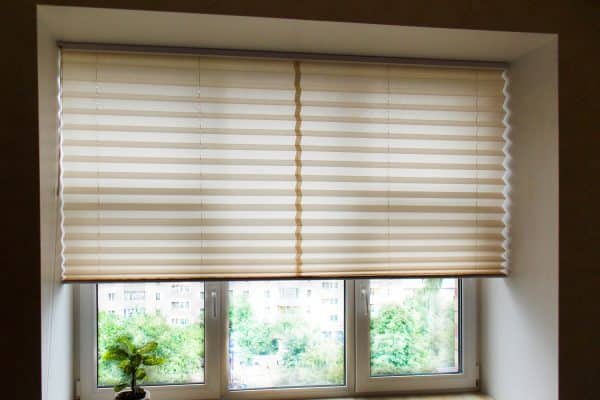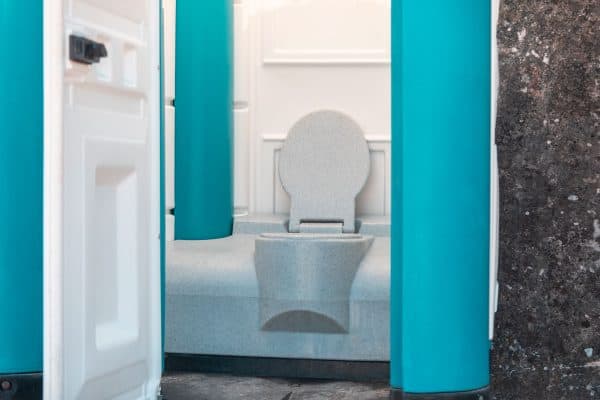Window blinds are an integral part of interior design. The shade or color in relation to the walls, furnishings, floor, and other elements of the room can either create unity or contrast. We have researched information that will help you decide if blinds should be lighter or darker than walls.
Lighter blinds blend naturally with soft contrast and can make smaller spaces feel larger. Darker blinds command attention, diverting the eye from other aspects of the room. Blinds can be a shade lighter or darker than the walls as long as they complement the rest of the room.
Inasmuch as the issue boils down to personal preference, there are certain principles of design that have to be considered. The article contains recommendations, tips, and guidelines that would enable you to make an informed choice. If you wish to find out more, continue reading!
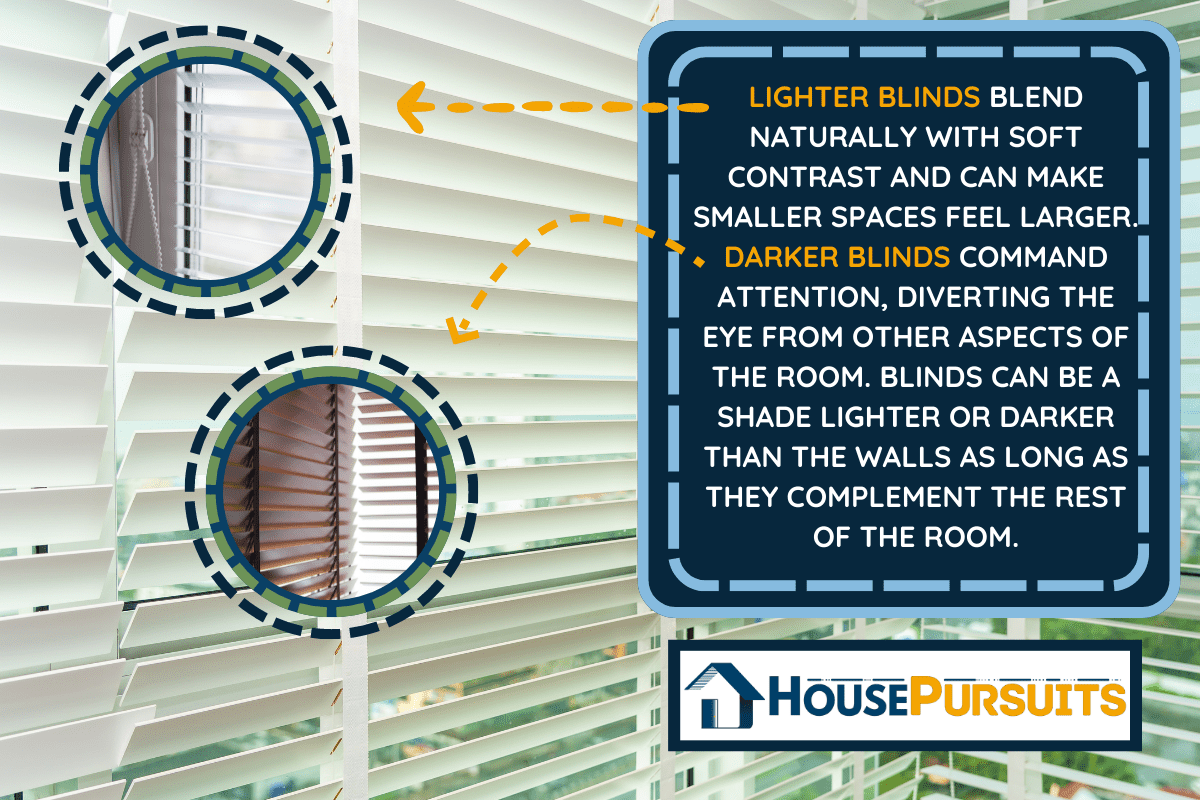
Blinds: An Overview
What's The Purpose Of Window Blinds
Blinds are used to provide your living space with ample privacy and enclosure or they may be utilized to accentuate or highlight an area.
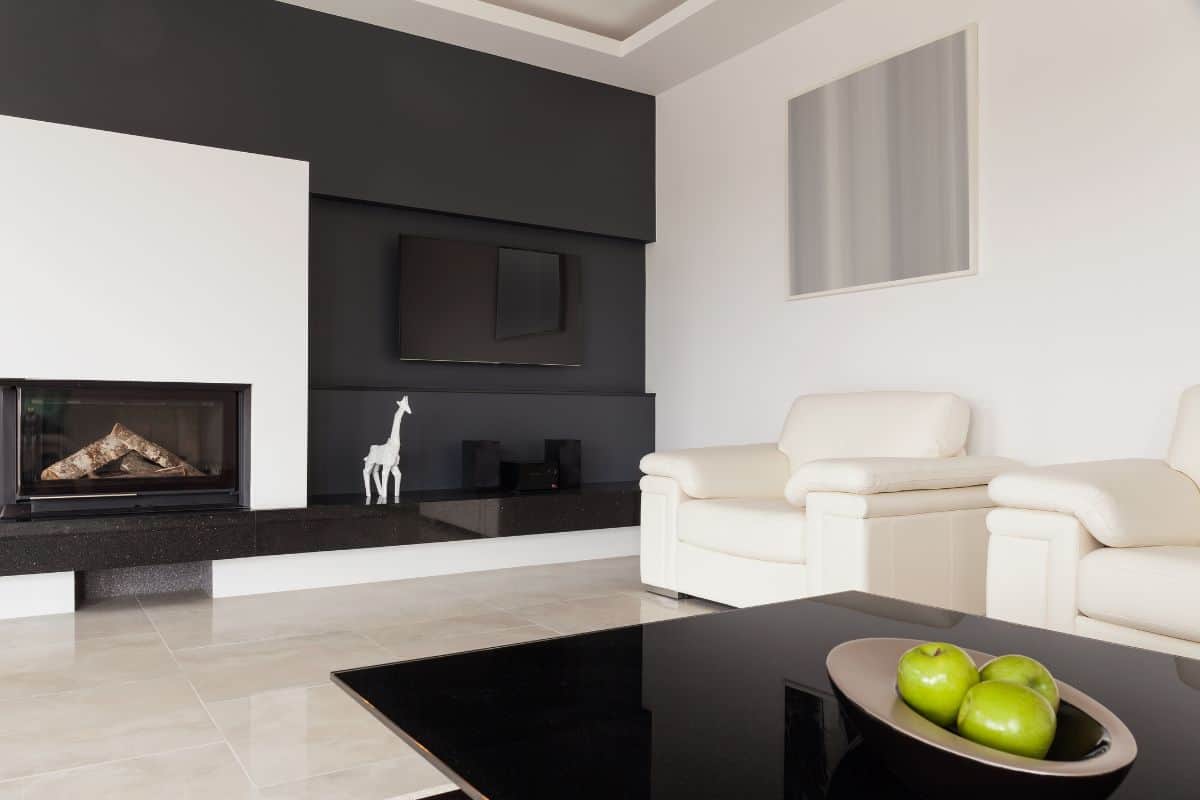
Both ornamental and basic types have the same purpose, however, the overall concept of your design will affect its general objective. To illustrate, if your purpose for putting up blinds is to provide shade, then you can opt to use materials with subdued tones or use a shade slightly similar to the color of your wall.
This is due to the fact that closed blinds have more visual impact. This guide helps if you have artwork hanging on your walls, and you do not want your blinds to be the focal point of your room.
If, on the other hand, you want the blinds to create a highlighting effect, you can choose colors or shades that have more impact or visual presence.
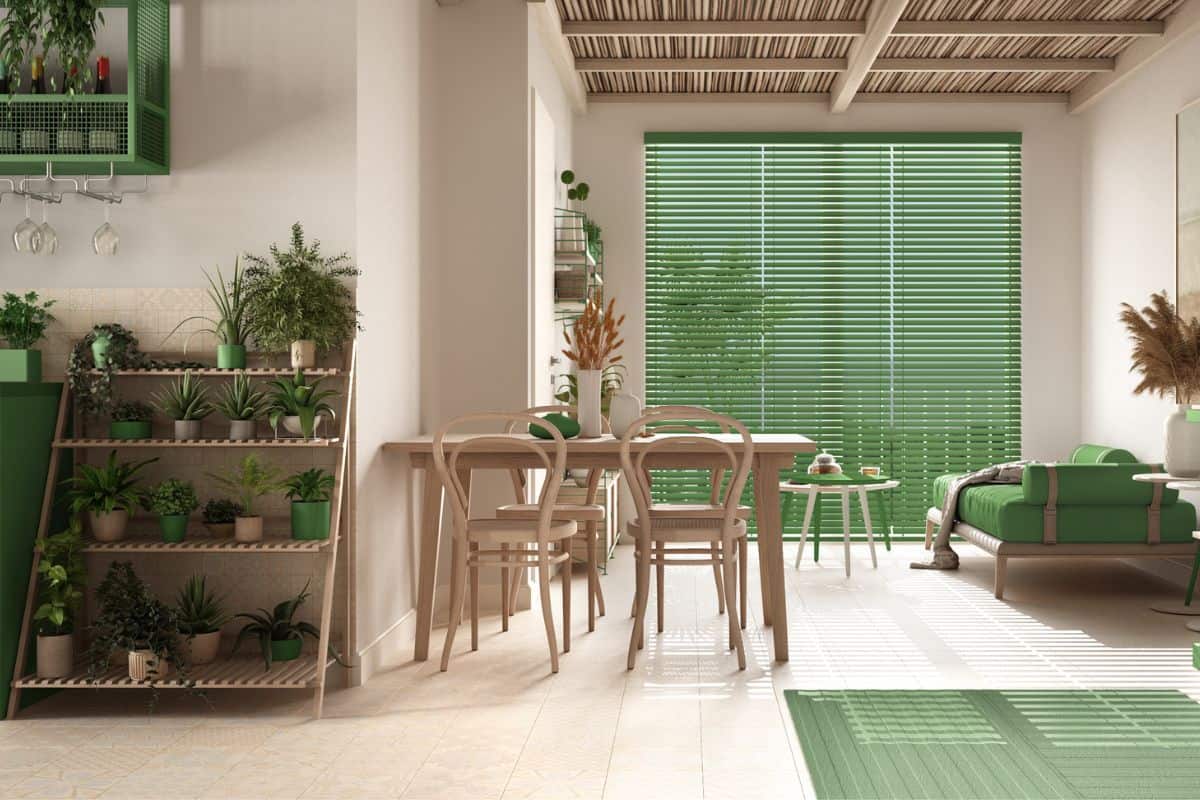
To illustrate, light walls could be contrasted with bright hues like blue or green as long as there are other elements that match like sofa cushions or area rugs.
Types Of Window Blinds
Window blinds come in various designs and sizes. Venetian blinds are the most popular of all the types. It features horizontal slats that are attached to strings. The material is best suited for smaller windows since the dimensions are specifically designed for that particular use.
See these Venetian mini-blinds at Amazon.
Vertical blinds, as the name implies, have vertical individual slats hanging along a track. They are ideal for large floor-to-ceiling windows because unlike Venetian blinds, the materials are not prone to bowing or bending over time.
This type of window covering opens in the middle, some can be adjusted with their individual panels.
See these vertical blinds at Amazon.
Window Blind Materials
Window blinds are made up of different materials. This gives you a wide variety of options to choose from.
1. Wood
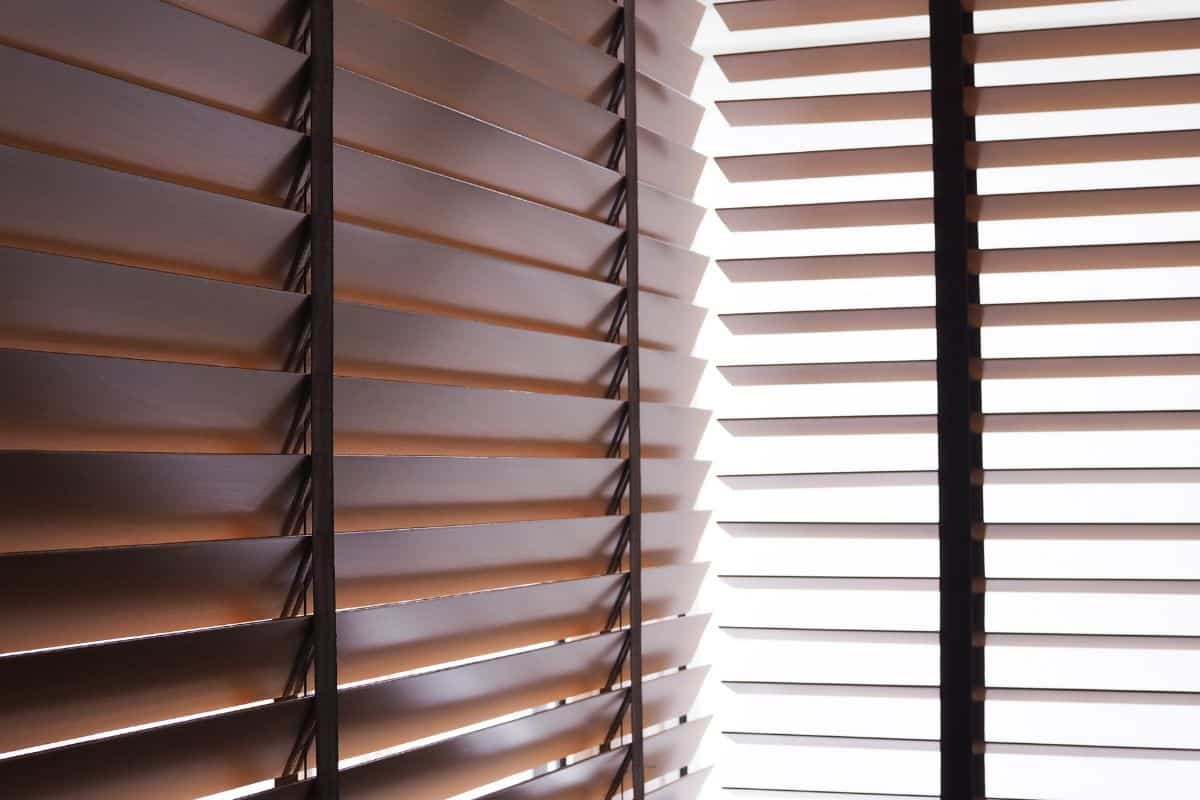
Wood blinds offer the best privacy and are most effective in controlling the amount of light that penetrates a room. They feature a natural and classy look that blends well with all types of wall finishes.
However, the material may be damaged in humid climates and in areas that have a lot of moisture. Wood blinds are pricier and require more maintenance and care.
2. Faux Wood
Faux, or false wood is made from synthetic materials that are durable and easy to clean and maintain. They feature the appeal and natural appearance of wood but are more affordable and are available in a wide range of designs and finishes.
Faux wooden blinds can be installed in any area around your home that requires both style and privacy.
3. Metal
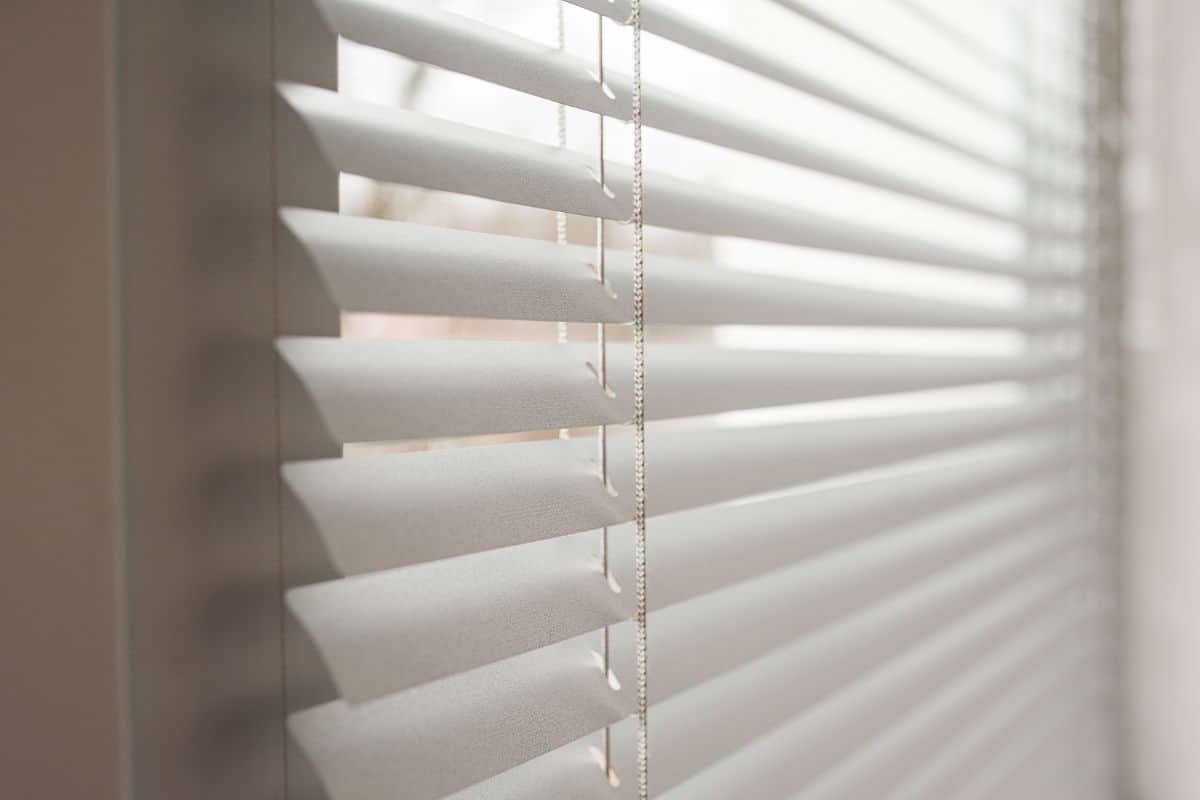
Aluminum is the most common material used in metal blinds since they are lightweight and reflect light and heat effectively. They are available and come in different colors, sizes, and designs.
Even though the product consists of a wide variety of selections, the material itself has a lesser aesthetic appeal than wood.
4. Plastic
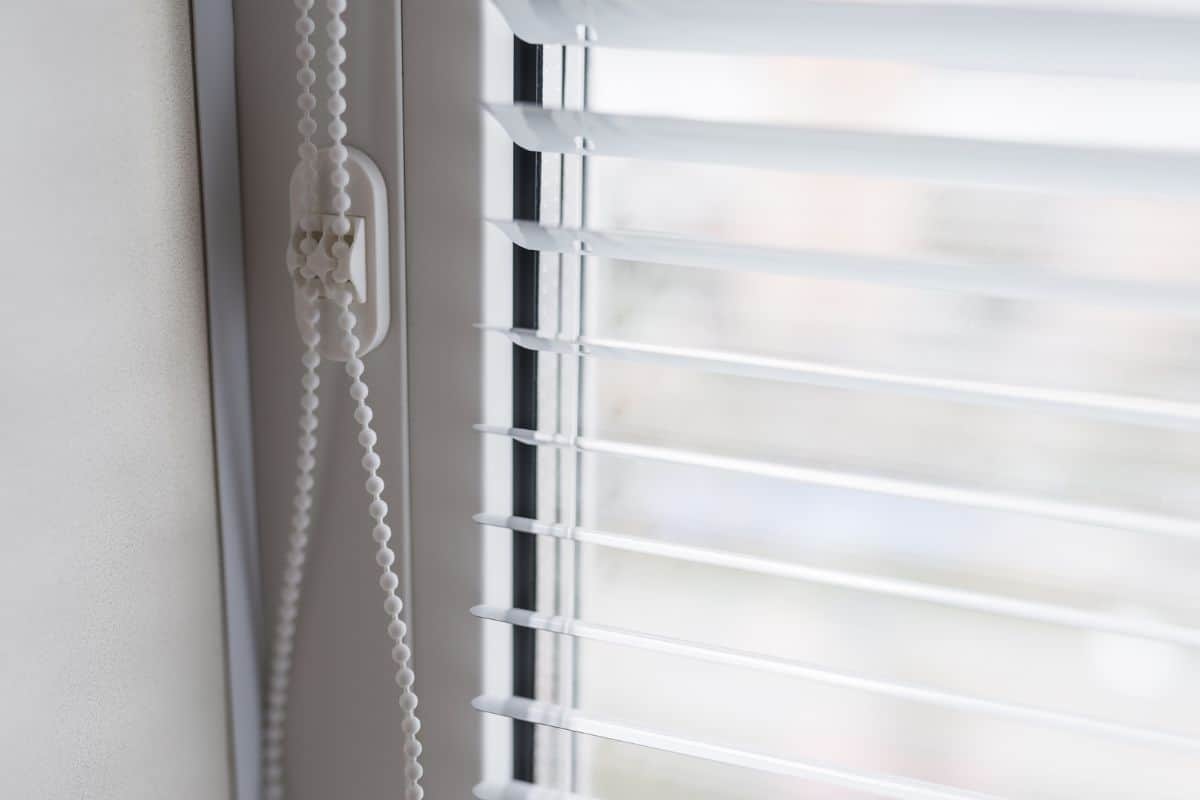
Plastic blinds made from vinyl and other synthetic materials are the most affordable kind that comes in a wide variety of options and designs. They are a practical alternative but may not blend well with classical designs and more sophisticated indoor themes.
Effects Of Lighter Blinds
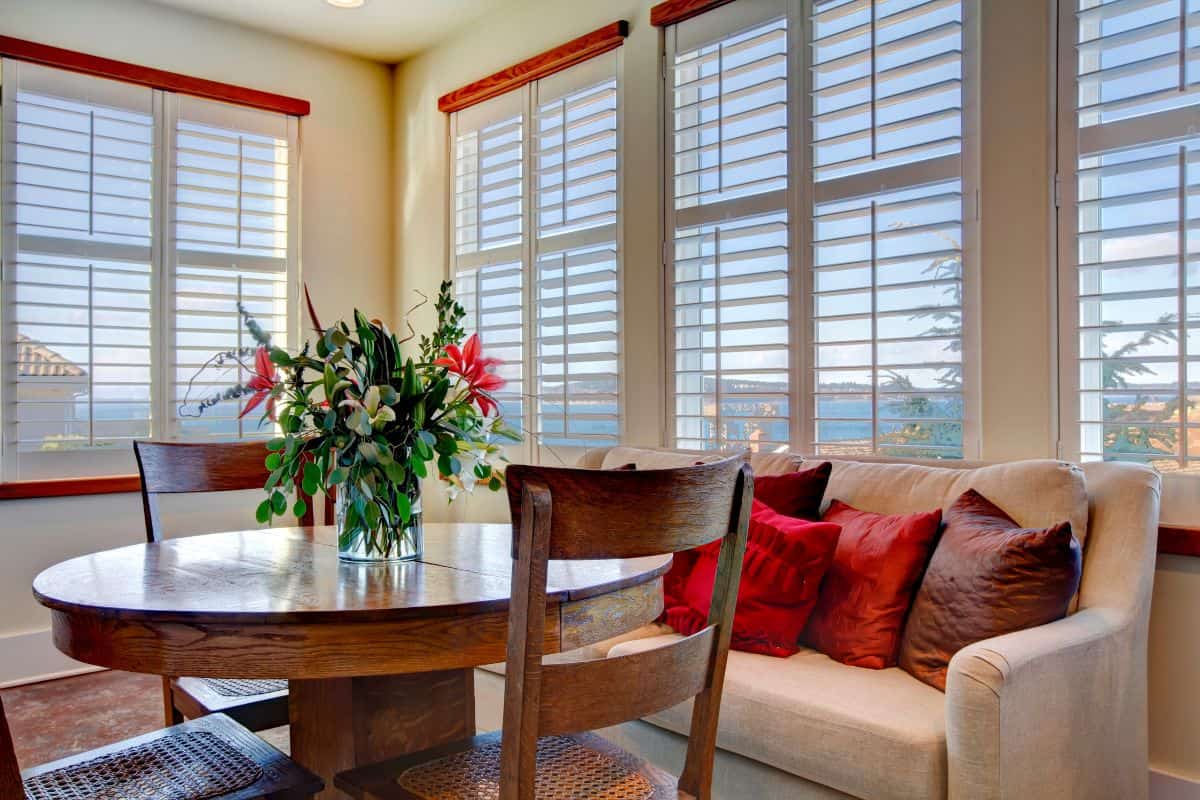
A light colored window covering has a significant effect on a room's general atmosphere. It creates a softer contrast that prevents the clashing of colors between your wall and window frame.
Lighter shades blend naturally without interfering with the visual appeal of your room's focal point. This concept is ideal to use in small spaces because it makes an area appear and feel larger than it actually is.
Effects Of Darker Blinds

Darker blinds produce a more dominating presence because they carry out a significant visual strength that captures the attention and diverts it from paintings or other wall ornaments. If the hue or tone is only slightly darker than the walls, it creates continuity without competing with the rest of the interior.
What Is Color Theory And Color Wheel?
Color theory is a written concept formulated by Sir Isaac Newton. It consists of rules and guidelines that enable designers and homeowners to properly choose which combinations complement each other.
Basically, it is a representation of the spectrum of colors that define their relationship and effect based on usage and application.
The Different Types Of Color Scheme
The types of color schemes are derived from the color wheel. Understanding the concept will help you decide which combination best suits your home.
Monochromatic
A monochromatic color scheme refers to all the hues of a particular color. To illustrate, brown consists of various shades or tones such as chestnut, burnt umber, rosy brown, and dark brown.
Complementary
Complementary colors are pairs of contrasting pigments and are located on opposite sides of the color wheel. When positioned beside each other, they create a strong sharp complementing contrast. Examples of these are:
- red and green,
- orange and blue,
- and yellow and purple.
Analogous
Analogous colors refer to a group of three pigments alongside each other on the color wheel. It consists of one major or dominant hue that covers almost the entirety of the room, a secondary or supporting color complementing the design, and a third color highlighting the overall aesthetic appeal.
What Is The 60-30-10 Color Rule?
The 60-30-10 color rule is a guideline or concept used to create harmony and balance between colors inside a living space. It is relatively easy to use.
The 60 percent pertains to the majority or dominant structures like walls, doors, and floors. They are the pervading shade that provides the backdrop for furnishings and other interior fixtures.
The secondary color constitutes 30 percent of the entirety or overall composition of your interior which includes blinds, curtains, furniture, and bed linens. It generally supports the backdrop or dominant hue while providing a harmonious contrast with the overall palette of your living area.
Lastly, the 10 percent mainly serves as your room's accent color. These include your throw pillows, artworks, plants, and any other ornamental designs.
For a relatively simpler idea, use a monochromatic color scheme, since the hues already form harmonious relationships when combined.
In Closing
Generally, blinds can be lighter or darker than your walls. Your decision mainly depends on the overall design and color palette of your living space. We hope this article has been insightful in helping you come up with the best choice.



![Stylish living room interior with comfortable sofa near window, Can Blinds Between Glass Be Repaired [Inc. Broken String, Changing Snap-In, And Uneven Blinds]?](https://housepursuits.com/wp-content/uploads/2022/10/Stylish-living-room-interior-with-comfortable-sofa-near-window-600x400.jpg)
